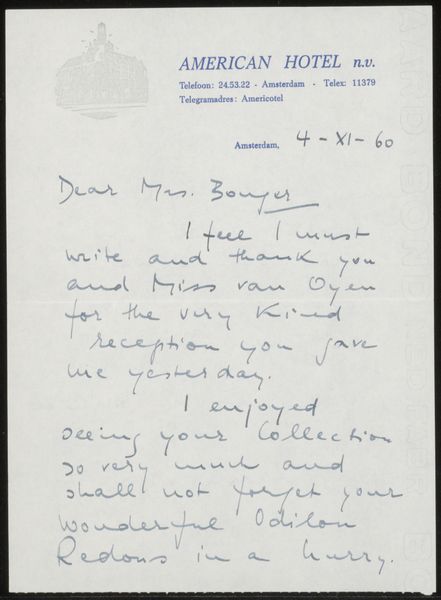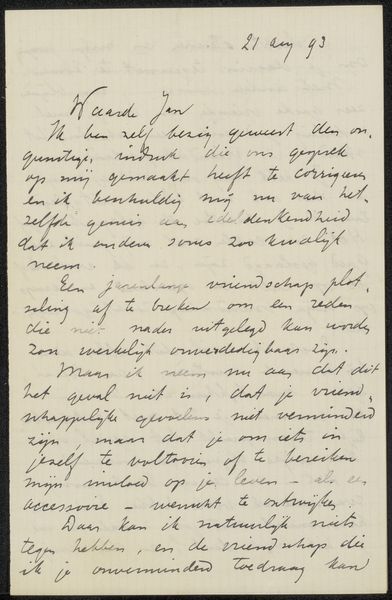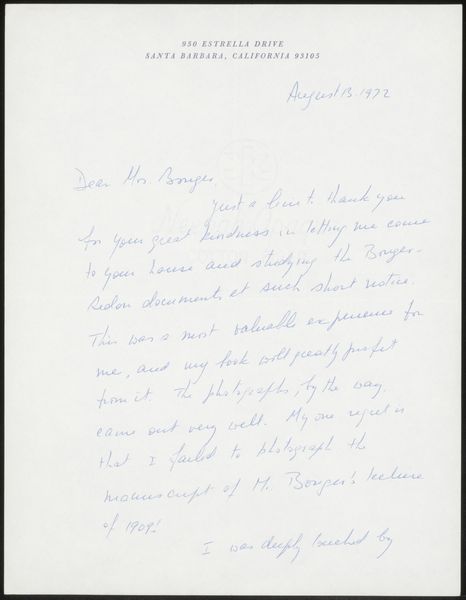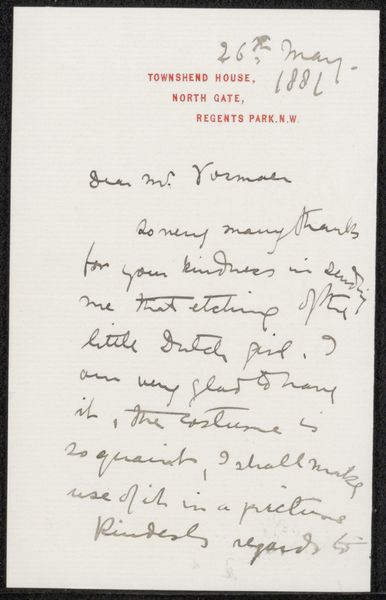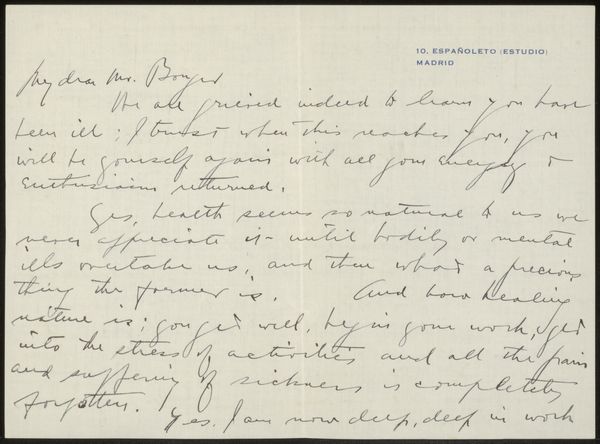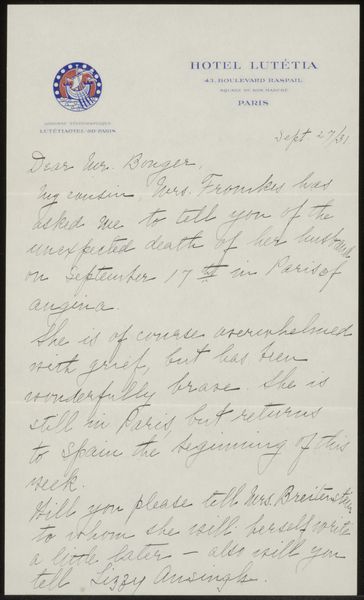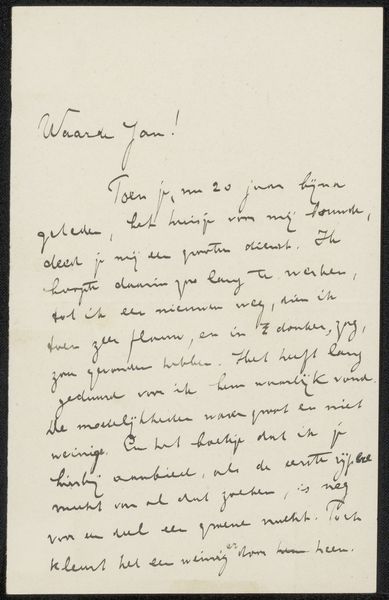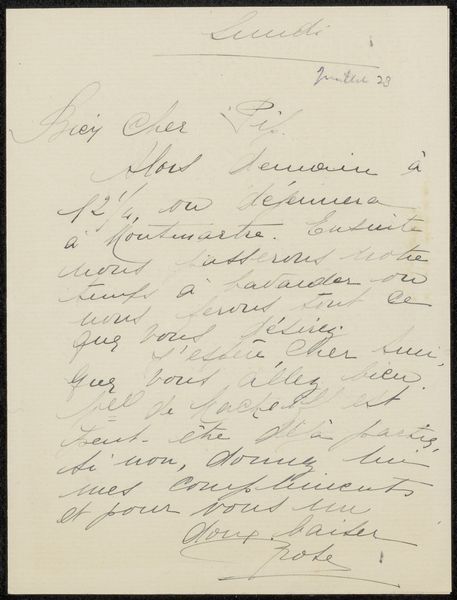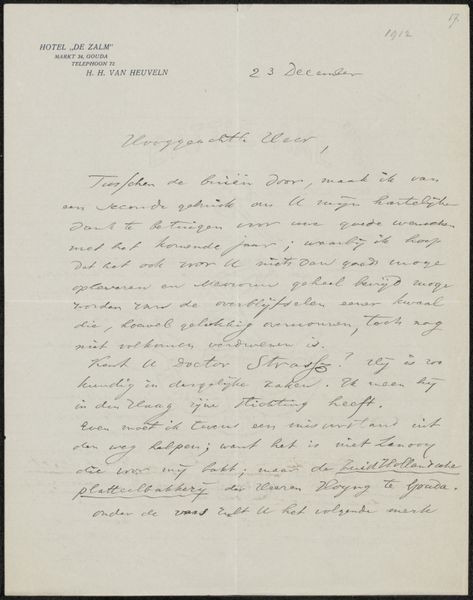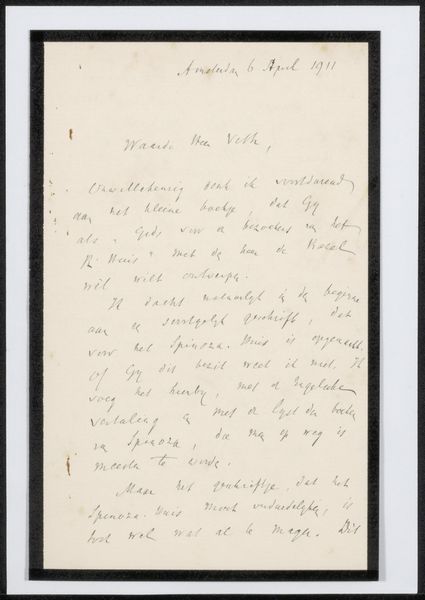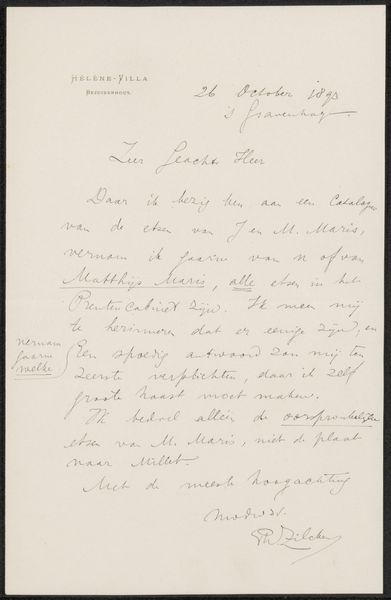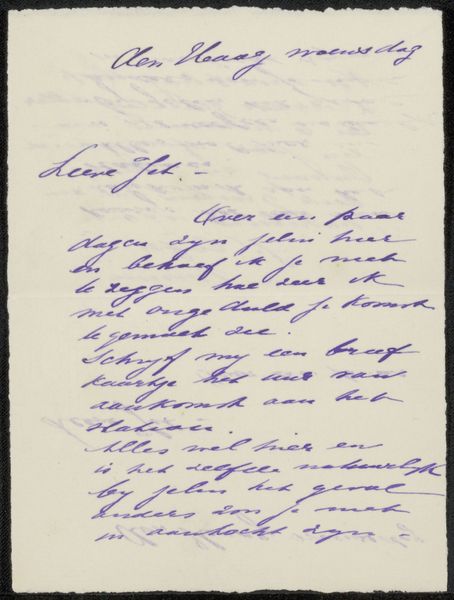
Copyright: Rijks Museum: Open Domain
Editor: Here we have "Brief aan Carel Vosmaer," possibly from 1883, a drawing in ink on paper by Laura Theresa Alma-Tadema. It's a handwritten letter, and seeing her script feels quite intimate. What do you see in this piece, beyond the surface of a thank you note? Curator: It’s interesting to consider this letter as more than just a personal correspondence; it’s a tangible artifact of Victorian artistic and intellectual circles. Alma-Tadema’s reference to translating “The Amazone” hints at a vibrant network of literary exchange. How might her gender influence her position and participation within such networks? Editor: That's a perspective I hadn't considered. Did women face specific hurdles or have different roles in these artistic communities? Curator: Absolutely. Despite their often-significant contributions, women artists and intellectuals were frequently marginalized. Alma-Tadema’s letter, while seemingly simple, provides a glimpse into how she navigated these social structures. Was she merely thanking Vosmaer, or subtly asserting her presence within his sphere of influence? And what power dynamics may be implicit, both as a woman and relative to Vosmaer himself? Editor: So, you're suggesting that this isn't just a thank you note, but perhaps a quiet declaration of her involvement and intellect within a male-dominated world? Curator: Precisely. Examining her choice of language, the careful script, and even the formality of the address, "Dear Mr. Vosmaer," reveals a calculated performance. It’s in these seemingly mundane details that we find the seeds of resistance and negotiation. Editor: That completely changes how I view this letter. It's no longer just a document; it's a statement! I learned so much from your point of view. Curator: And I find myself appreciating anew how personal letters offer insights into history’s grand narratives.
Comments
No comments
Be the first to comment and join the conversation on the ultimate creative platform.
